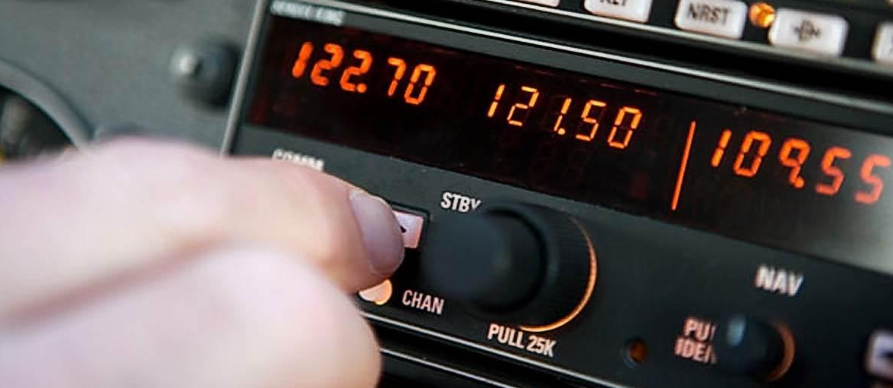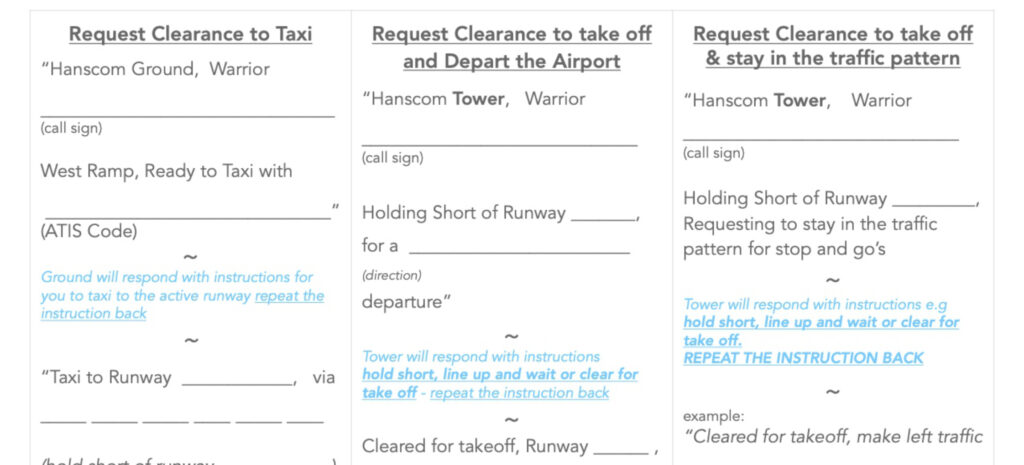
Radio calls are a crucial aspect of aviation communication, especially for student pilots. Effective radio communication ensures safe and efficient air traffic management. Here is a guide for student pilots on making standard radio calls in various phases of flight:
Basic Principles
- Listen First: Before transmitting, always listen to ensure the frequency is clear.
- Think Before Speaking: Organize your thoughts to avoid unnecessary pauses and confusion.
- Be Clear and Concise: Use standard phraseology and speak clearly.
General Format
A typical radio call format includes:
- Who you are calling (e.g., Ground, Tower, Approach).
- Who you are (your aircraft type and tail number).
- Where you are (your position).
- What you want (your request or intention).
- With Information (i.e ATIS information code)
Common Radio Calls
Ground Operations
Requesting Taxi Clearance:
[Airport] Ground, [Your Aircraft Type and Tail Number], at [Location], with [ATIS Information], ready to taxi.
Example:
Hanscom Ground, Warrior 3572M, at general aviation parking, with information Alpha, ready to taxi.
Crossing a Runway:
[Airport] Ground, [Your Aircraft Type and Tail Number], request to cross runway [Number] at [Location].Example:
Hanscom Ground, Warrior 3572M, request to cross runway 29 at Golf.
Departure:
[Airport] Tower, [Your Aircraft Type and Tail Number], Holding short of Runway [Runway Number] ready for a [Direction] Departure.Example:
Hanscom Tower, Warrior 3572M, Holding short of Runway 29 ready for a Northwest Departure.
Arrival
[Facility Name] Approach, [Your Aircraft Type and Tail Number], [Position], [Altitude], inbound for landing with information [ATIS Code].Example:
Hanscom Tower, Warrior 3572M, 10 miles to the north west, at 2,500 feet, inbound for landing with information Bravo.
Landing Clearance
[Airport] Tower, [Your Aircraft Type and Tail Number], [Position], [Runway], full stop landing.Example:
Hanscom Tower, Warrior 3572M, 3 miles final, runway 29, full stop landing.
Tips for Effective Communication
- Practice: Regularly practice radio calls during ground training.
- Use a Script: Initially, use scripts until you become comfortable.
- Feedback: Seek feedback from instructors and listen to live ATC communications to improve.
Resources
- FAA’s Aeronautical Information Manual (AIM): Provides comprehensive information on radio communication procedures.
- LiveATC.net: Listen to real-time ATC communications to familiarize yourself with the language and flow of radio calls.
By adhering to these guidelines and practicing consistently, student pilots can become proficient in aviation radio communication, ensuring both safety and efficiency in their flight operations.
Radio Calls Script Sheet
Download the script sheet to kick start your radio calls to ground and tower control. Print the sheet out and fill in the blanks prior to attempting to communicate and use the script as a guide to effective communications.
